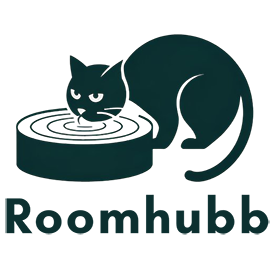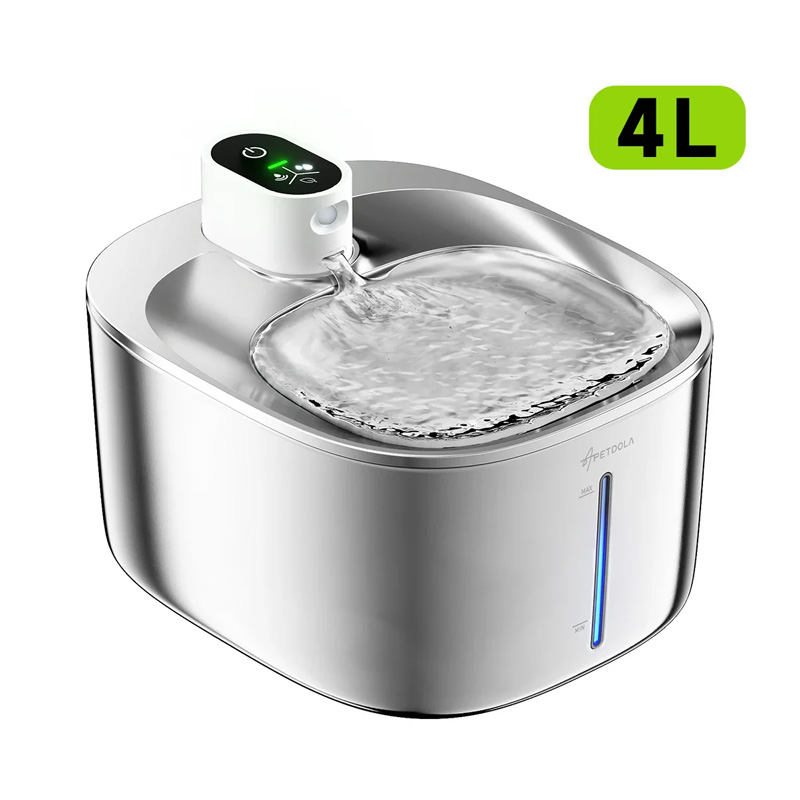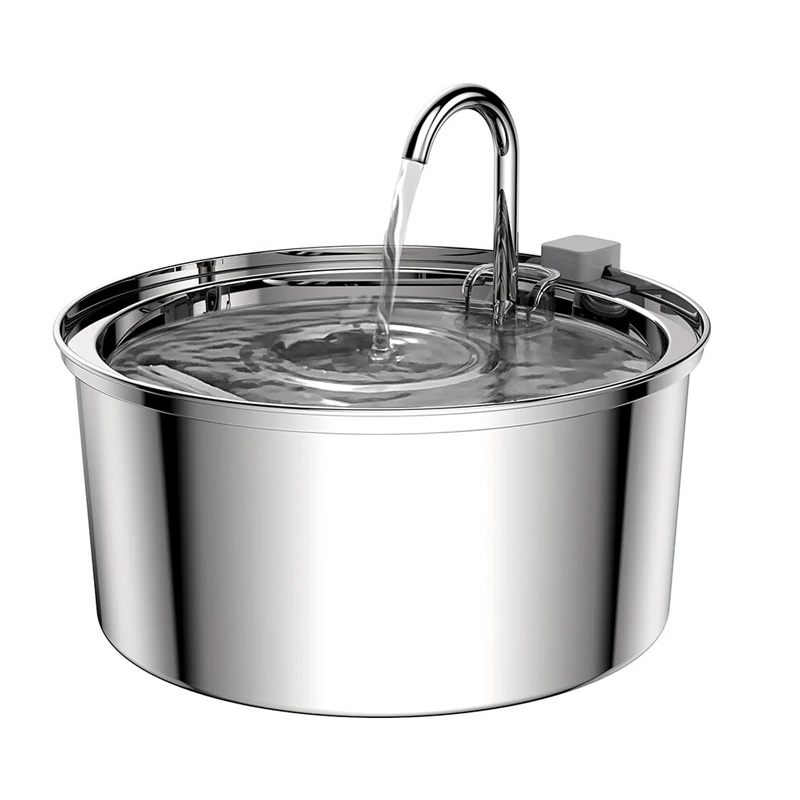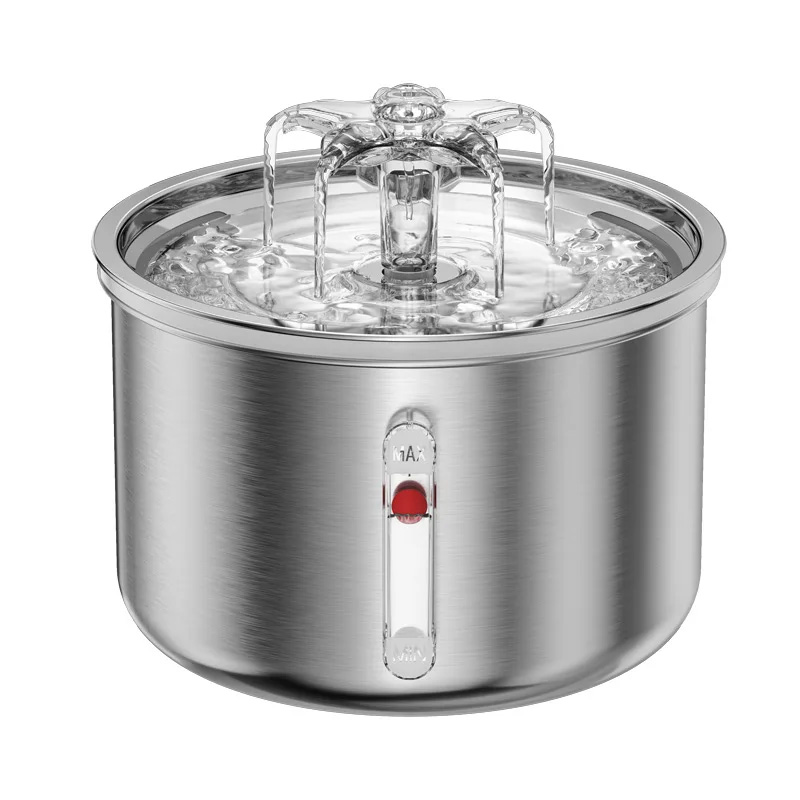Wiki Pet
Why do cats prefer fresh water? Understanding feline instincts and drinking behavior
If you’re a cat owner, you’ve likely seen your cat ignore its water bowl and instead jump up to the sink, kitchen basin, or even try to drink from a running faucet. Even when the bowl is full and clean, your cat might still be “picky.” This behavior often raises a common question: Why do cats prefer fresh or running water?
This isn’t just about being “fussy.” In fact, it reflects the survival instincts, biological characteristics, and ingrained habits of cats, dating back to their time in the wild.
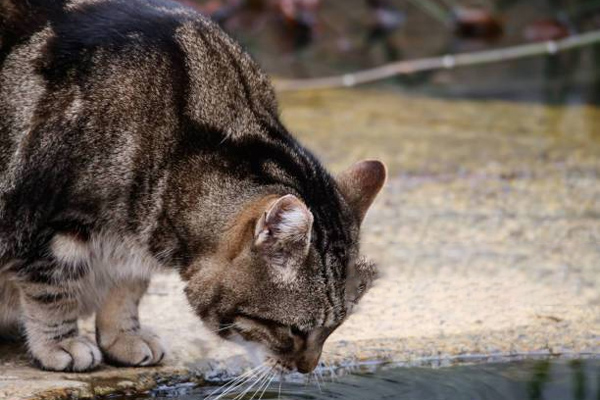
Survival instinct: Running water is often cleaner
In nature, wild cats and their relatives like leopards and lynxes usually avoid stagnant water due to the higher risk of bacteria and parasites. Flowing water-like streams or rain-is typically fresher and contains fewer contaminants.
Although domestic cats now live indoors, they’ve retained this strong instinct from their ancestors. Given a choice between still water and flowing water, cats are naturally drawn to the sound, movement, and “freshness” of running water.
Cats are extremely clean animals
Cats are known for being some of the cleanest pets. They groom themselves daily, even using their saliva-which contains natural antibacterial properties-as a cleaning agent.
This cleanliness extends to their approach to drinking water. If the water smells strange, is slightly old, or contains even tiny bits of dust, cats may refuse to drink it. With their acute sense of smell and taste, cats can detect differences that humans can’t perceive.
Sensitive senses help cats distinguish fresh from stale water
Cats have a much more refined sense of smell and taste than humans. Even a hint of dust, bacteria, or the plastic smell of a bowl can turn them off.
Plastic bowls, in particular, retain odors more than materials like stainless steel, ceramic, or glass. So even if the bowl appears clean to you, your cat might still find it suspicious.
This is why many cats only drink freshly poured water or will wait until the bowl is refilled. Especially picky cats might refuse to drink if the water has been sitting for too long.
Factors that affect a cat’s water-drinking habits
Besides instincts and sensory perception, environmental factors also play a big role in a cat’s drinking behavior. Here are some of the most common:
Water bowl placement
Many owners place the water bowl near the food or litter box for convenience. However, this may not be ideal:
- Water near the litter box is often avoided by cats, as their instinct is to stay away from drinking sources near waste (to avoid contamination).
- If feeding dry food, placing the water bowl nearby is a good idea-dry food makes cats thirsty, prompting them to drink immediately after eating.
- For wet food like pate or meat, it’s better to place the water bowl in a separate location. Cats will typically seek water after resting or light activity.
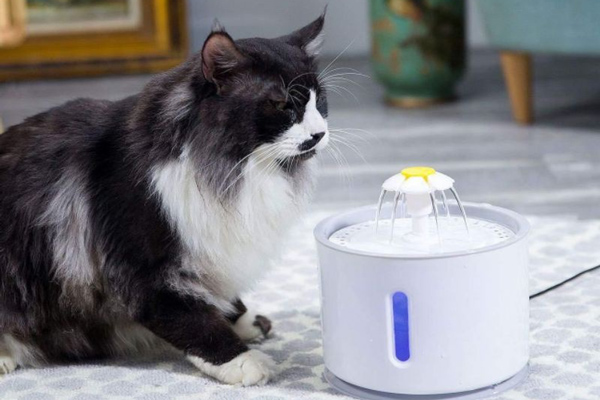
An ideal location could be near the cat’s play area or sleeping spot-places they frequent and feel safe.
Bowl material and shape
The material of the water bowl directly affects a cat’s willingness to drink:
- Plastic bowls often retain unpleasant odors and accumulate bacteria. Even if cleaned, cats might still refuse them.
- Stainless steel, ceramic, or glass bowls are optimal-odor-free and easy to sanitize.
Bowl shape also matters. If the bowl is too narrow or deep, a cat’s whiskers may touch the sides-causing “whisker fatigue.” This discomfort can reduce their desire to drink.
Sound and movement of flowing water
Cats are often fascinated by running water-not because they like to play with it, but because the sound resembles natural streams.
Some cats may even try to turn on the tap or wait by it for you to open it. If your cat frequently exhibits this behavior, consider getting an automatic pet water fountain. These create a continuous stream that feels fresh and enticing to cats.
Water temperature also matters
Cats don’t like water that’s too hot or too cold. However, on hot days, some cats especially enjoy slightly cool water.
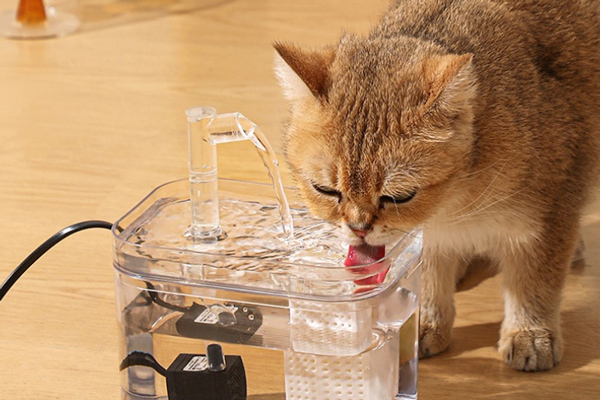
You can drop a few small ice cubes into their bowl during summer to make it more appealing. Just be sure to change the water often to avoid dirt buildup or making it too cold, which could upset their stomach.
Health issues can influence drinking water
A cat’s drinking habits may change due to health problems. For instance:
- Cats with diabetes or kidney disease may drink more than usual.
- Cats with urinary tract infections or constipation need to be encouraged to drink more water.
- If your cat suddenly drinks much less or stops drinking entirely, watch for other signs like lethargy, loss of appetite, or changes in urination. Consult a vet if you notice these symptoms.
Conclusion
A cat’s drinking behavior isn’t random-it’s a combination of instinct, biology, and environment. A preference for fresh or running water is perfectly normal and shows that cats still retain their smart, survival-oriented instincts.
To ensure your cat stays hydrated and healthy, you should:
- Change the water at least 1-2 times a day.
- Use appropriate bowls-preferably stainless steel or ceramic.
- Place water bowls in locations that suit your cat’s habits.
- Consider investing in a pet fountain if your cat prefers running water.
Understanding and respecting these natural preferences will help you care for your cat more effectively-and create a happier, healthier life for your furry companion.
